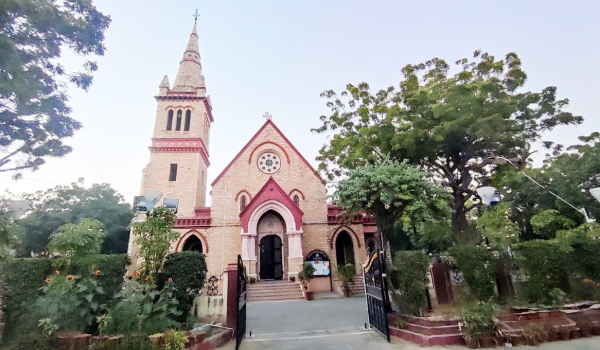
With a land area of 146, 680 square kilometers, Ajmer diocese covers 12 civil districts in Rajasthan state: Ajmer, Baran, Barmer, Bundi, Jaisalmer, Jhalor, Jhalawar, Jhodhpur, Kota, Pali, Sirohi, and Tonk.
Most people live in villages and work as agricultural laborers.
Hindi, Rajasthani and English are spoken.
A large portion of Agra diocese, known as the Rajasthan Mission, was entrusted to the Capuchins of Paris province in July 1890. The mission was made an apostolic prefecture of Rajputana on March 17, 1892. Father Betram was appointed its first prefect the following month.
On May 22, 1913, the prefecture was elevated to a diocese and Capuchin Father Fortunatus Henri Caumont, prefect at the time, was appointed the first bishop of Ajmer. The region that the diocese covered in the central state of Madhya Pradesh was detached on March 11, 1935, to form the prefecture apostolic of Indore.
Ajmer was handed over to the diocesan clergy on May 9, 1949, and in 1955 it was renamed Ajmer-Jaipur diocese. After ceding territory to the new archdiocese of Bhopal in 1963, Ajmer and Jaipur gave birth to Udaipur diocese in 1984. On July 20, 2005, the diocese was split into Ajmer and Jaipur dioceses.
The diocesan patrons are Our Lady of the Immaculate Conception and Saint Francis of Assisi.
The diocese is running educational institutions, healthcare centers and other social welfare programs. In the area of pastoral care, it prioritizes formation of Small Christian Communities and promotes Charismatic Renewal programs.
A few local Catholics live in villages. The urban parishes have mostly Catholic migrants who are employed in the government and private sectors.
Temperatures can reach 49° C in the summer and drop to 2° C in winter.
Bajra, maize, wheat, rice, millet and cotton are major agricultural products.
Besides agriculture and related food production, textiles, cement and tourism are the other major industries. The region also has mineral deposits, particularly zinc, gypsum and silver ore.
The Aravali Hills, one of the oldest mountain ranges in the world, run through the diocese, which also extends into the Thar desert, the only desert in South Asia. The diocese's northwestern region mostly consists of sand dunes, and on the west it touches the international boundary of Pakistan. The eastern region has large fertile areas. The Chambal and Banas are the major rivers.
A number of universities are located here, including Maharshi Dayanand Sarawasti University, Jai Narayan Vyas University in Jodhpur and Kota Open University.
Rajasthan means place (sthan) of kings (raja). The land is known for its chivalric heritage, including ancient forts and superb palaces.
More than half of India's heritage hotels are located in Rajasthan. Major tourist attractions include: the Dargah of Ajmer, Sam Sand Dunes and the desert national park in Jaisalmer, the fort and palace in Jodhpur, the Chambal garden in Kota and the temples in Mount Abu.
The desert festival in Jaisalmer, the Pushkar Fair and the Urs at Ajmer Sharif are some of the important regular cultural events.